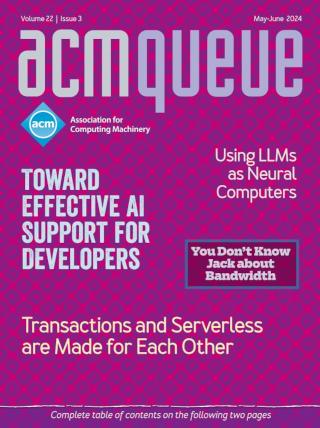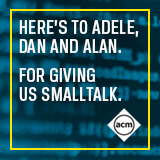
Enterprise Grid Computing:
Grid computing holds great promise for the enterprise data center, but many technical and operational hurdles remain.
I have to admit a great measure of sympathy for the IT populace at large, when it is confronted by the barrage of hype around grid technology, particularly within the enterprise. Individual vendors have attempted to plant their flags in the notionally virgin technological territory and proclaim it as their own, using terms such as grid, autonomic, self-healing, self-managing, adaptive, utility, and so forth. Analysts, well, analyze and try to make sense of it all, and in the process each independently creates his or her own map of this terra incognita, naming it policy-based computing, organic computing, and so on. Unfortunately, this serves only to further muddy the waters for most people. All of these terms capture some aspect of the big picture—they all describe parts of solutions that seek to address essentially the same problems in similar ways—but they’re never quite synonymous.
Call That Gibberish?:
Detecting the real from the fake is getting harder.
The Ninth World Multiconference SCI (Systematics, Cybernetics, and Informatics) 2005 has attracted more attention than its vaporific title usually merits by accepting a spoof paper from three MIT graduate students. The Times (of London, by default, of course) ran the eye-catching headline, “How gibberish put scientists to shame” (April 6, 2005). One of the students, Jeremy Stribling, explains how they had developed a computer program to generate random sequences of technobabble in order to confirm their suspicions that papers of dubious academicity were bypassing serious, or indeed, any scrutiny. In fact, the students claim ulterior, financial motives behind this lack of proper peer review. The SCI organizers, it is suggested, solicit admissions via substantial e-mail shots and usually charge a fee for accepted papers to be presented at their conference.
Describing the Elephant: The Different Faces of IT as Service:
Terms such as grid, on-demand, and service-oriented architecture are mired in confusion, but there is an overarching trend behind them all.
In a well-known fable, a group of blind men are asked to describe an elephant. Each encounters a different part of the animal and, not surprisingly, provides a different description. We see a similar degree of confusion in the IT industry today, as terms such as service-oriented architecture, grid, utility computing, on-demand, adaptive enterprise, data center automation, and virtualization are bandied about. As when listening to the blind men, it can be difficult to know what reality lies behind the words, whether and how the different pieces fit together, and what we should be doing about the animal(s) that are being described. (Of course, in the case of the blind men, we did not also have marketing departments in the mix!)
Enterprise Software as Service:
Online services are changing the nature of software.
While the practice of outsourcing business functions such as payroll has been around for decades, its realization as online software services has only recently become popular. In the online service model, a provider develops an application and operates the servers that host it. Customers access the application over the Internet using industry-standard browsers or Web services clients. A wide range of online applications, including e-mail, human resources, business analytics, CRM (customer relationship management), and ERP (enterprise resource planning), are available.
Kode Vicious Cycles On:
A koder with attitude, KV answers your questions. Miss Manners he ain’t.
Not only does California give you plenty of sun, it also apparently has employers that give you plenty of time to play around with the smaller problems that you like, in a programming language that’s irrelevant to the later implementation.
A Conversation with David Anderson:
Supercomputing on the grassroots level
Millions of PCs on desktops at home helping to solve some of the world’s most compute-intensive scientific problems. And it’s an all-volunteer force of PC users, who, with very little effort, can contribute much-needed PC muscle to the scientific and academic communities.
Web Services and IT Management:
Web services aren’t just for application integration anymore.
Platform and programming language independence, coupled with industry momentum, has made Web services the technology of choice for most enterprise integration projects. Their close relationship with SOA (service-oriented architecture) has also helped them gain mindshare. Consider this definition of SOA: "An architectural style whose goal is to achieve loose coupling among interacting software agents. A service is a unit of work done by a service provider to achieve desired end results for a service consumer. Both provider and consumer are roles played by software agents on behalf of their owners." Although SOA doesn’t mandate Web services, its emphasis on loose coupling requires use of something with the characteristics of Web services.





